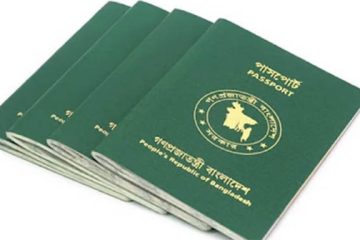Experts warn major earthquake any time
Ten earthquakes measuring 2.0 to 4.8 on the Richter scale having epicentres in the Chandpur areas rocked Bangladesh in the past week, giving a warning of a major earthquake any time, according to the Dhaka University Earth Observatory.
The earthquakes included the two that took place on the eve of Eid-ul-Fitr which panicked people across the country.
There was another quake of 5.2 magnitude shaking different parts of the country in the afternoon on Eid day. The epicentre of the earthquake was in Assam of India.
The Dhaka Met Office, however, recorded only three earthquakes, including the two that took place on the eve of Eid and the next day, which originated in the Chandpur region.
The Met Office said their seismometer could not detect earthquakes with a magnitude below 3.0 on the Richter scale if the distance of epicentre from the Met Office falls beyond 50km.
‘Our seismometer detected three earthquakes that originated in the Chandpur region in the past week,’ meteorologist Momenul Islam in Dhaka told New Age on Thursday.
‘The first one with a 3.6 magnitude, the epicentre of which was located 71km southeast off Dhaka somewhere in the Chandpur region, took place at 10:39pm on September 10.
The second, measuring 4.8 on the Richter scale took place the same day at 11.25pm and the epicentre was also located 71km southeast off the Dhaka Met Office.’
‘There is a correction about the epicentre of the second earthquake of September 10 as it was located in a place between Madaripur and Gopalganj. But in fact it was also located in the Chandpur belt.’
He said a tremor measuring 3.9 on the Richter scale with epicentre in the Chandpur region was felt in Bangladesh early Wednesday.
Experts at Dhaka University’s geology department and Bangladesh University of Engineering and Technology said the magnitude of the earthquakes varying from 2 to 4.8 on the Richter scale gave a signal of a major earthquake.
They also feared that a major earthquake with epicentre in and around the capital could hit the country any time, causing devastation.
He said the earthquake originating from a place in the Chandpur region, 72km southeast off the Agargaon Seismic Centre in Dhaka, shook the region at 3:33:18.94am.
According to the Dhaka University Earth Observatory web site, nine mild tremors with epicentres in the same region of Chandpur took place in six days.
Earlier, 19 minor earthquakes measuring 2 to 4 on the Richter scale occurred from the same region in 2008.
Asked about the authenticity of the reading of the Dhaka University Earth Observatory as the Dhaka Met Office could not detect earthquakes with magnitude below 3 on the Richter scale, the observatory’s director Syed Humayun Akhter, also a professor of structural geology in the university, said, ‘Our earth observatory is a consortium formed in cooperation with Rajshahi University, Khulna University, Chittagong University, Chittagong University of Engineering and Technology, Patuakhali University of Science and Technology and Shahjalal University of Science and Technology.’
‘We received instruments and technical support from the Incorporated Research Institutions for Seismology and UNAVCO (University NAVSTAR Consortium) in the United States. We use the technology the US Geological Survey uses,’ he said.
‘The US Geological Survey keeps records of earthquakes even with magnitudes of 1 on the Richter scale, if it happens within the territory of USA,’ he said.
The US Geological Survey usually does not post on its web site information on all earthquakes taking place outside the United States but for significant ones, especially with magnitude above 4 on the Richter scale, he added.
Asked about the reasons for frequent earthquakes with the epicentre in the same region, he said earthquakes were taking place as the strength accumulated over thousands of years within the earth-crust was released through some minor branch faults in the region.
‘Minor faults are the extension of about 100km detachment (decollement) fault situated in the north-south direction along the Indian-Burma tectonic plate boundary,’ he said.
‘As India and Burma tectonic plates are moving towards each other, Bangladesh’s landmass is being squeezed by 6mm every year, which gives adds to strength accumulation within the earth-crust in the Bengal basin,’ the geologist said.
‘This accumulated strength is released through faults when the pressure of the accumulated strength exceeds the strength of rock mass,’ he said.
‘As the detachment fault is now situated in the eastern part of the Meghna-Jamuna confluence… there might be a major earthquake originating in and around Dhaka any time.’
Humayun said even the country might experience a big shock with the epicentre in any place in Dhaka that could cause devastation in the capital, if the required preparations are not made right at the moment.
The Bangladesh Earthquake Society general secretary, Mehedy Ahmed Ansary, also a professor of BUET, said the history of earthquakes show that there might be a major shock every 250 to 300 years.
‘Bangladesh experienced an earthquake measuring over 7 on the Richter scale in 1762. So the country may experience a major shock any time,’ Ansary said.
He said, ‘Earthquake may not happen in 100 years but if it happens what will be the consequence if we do not have adequate preparedness.’




















